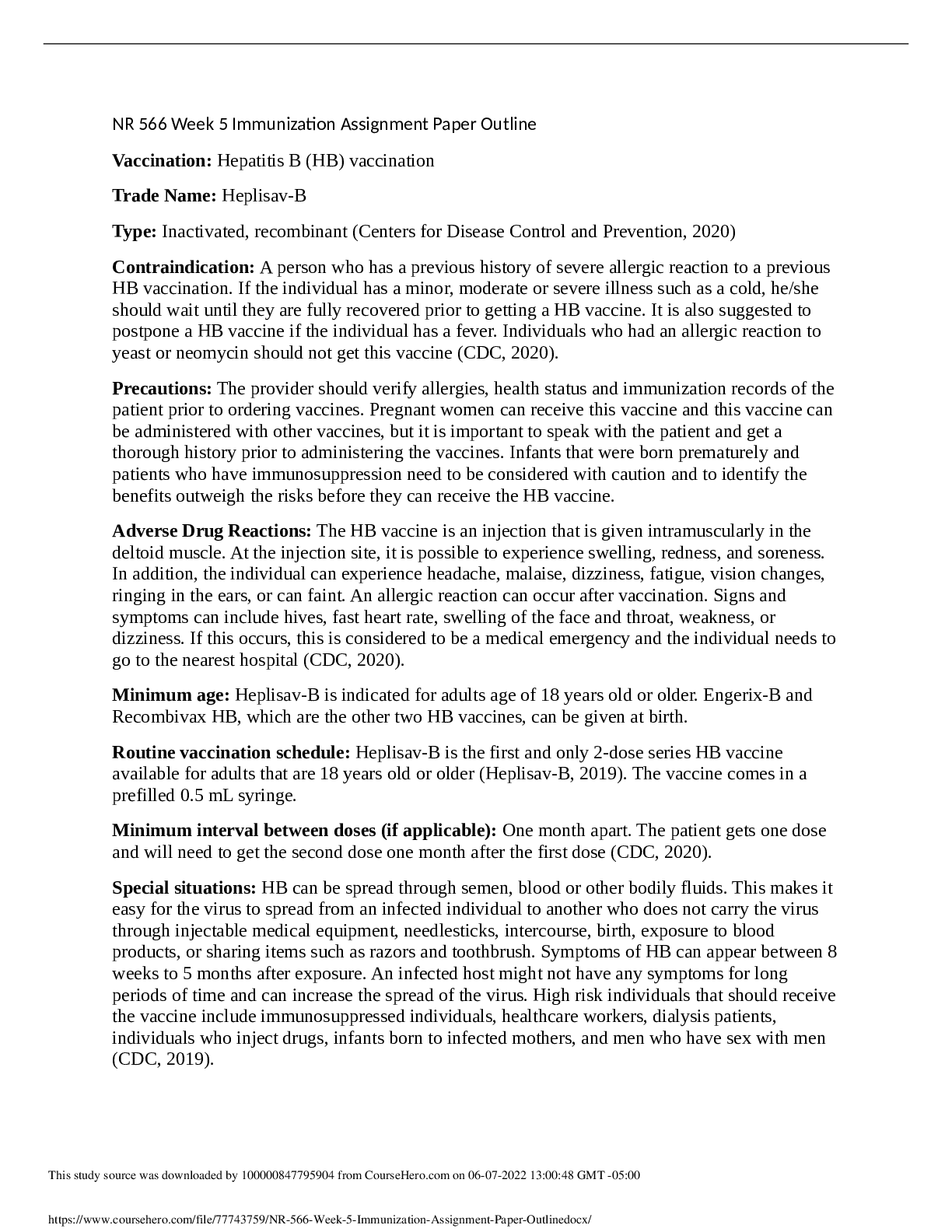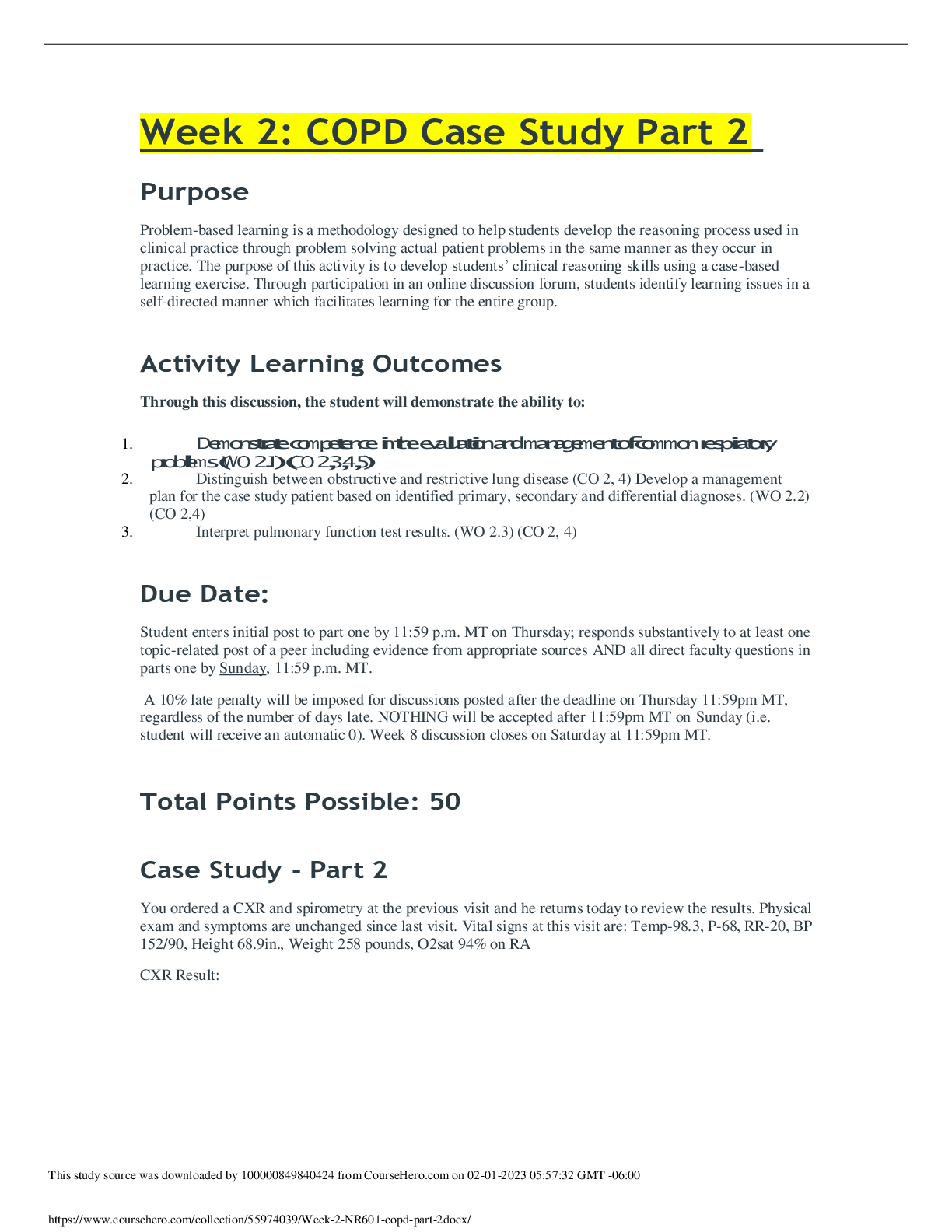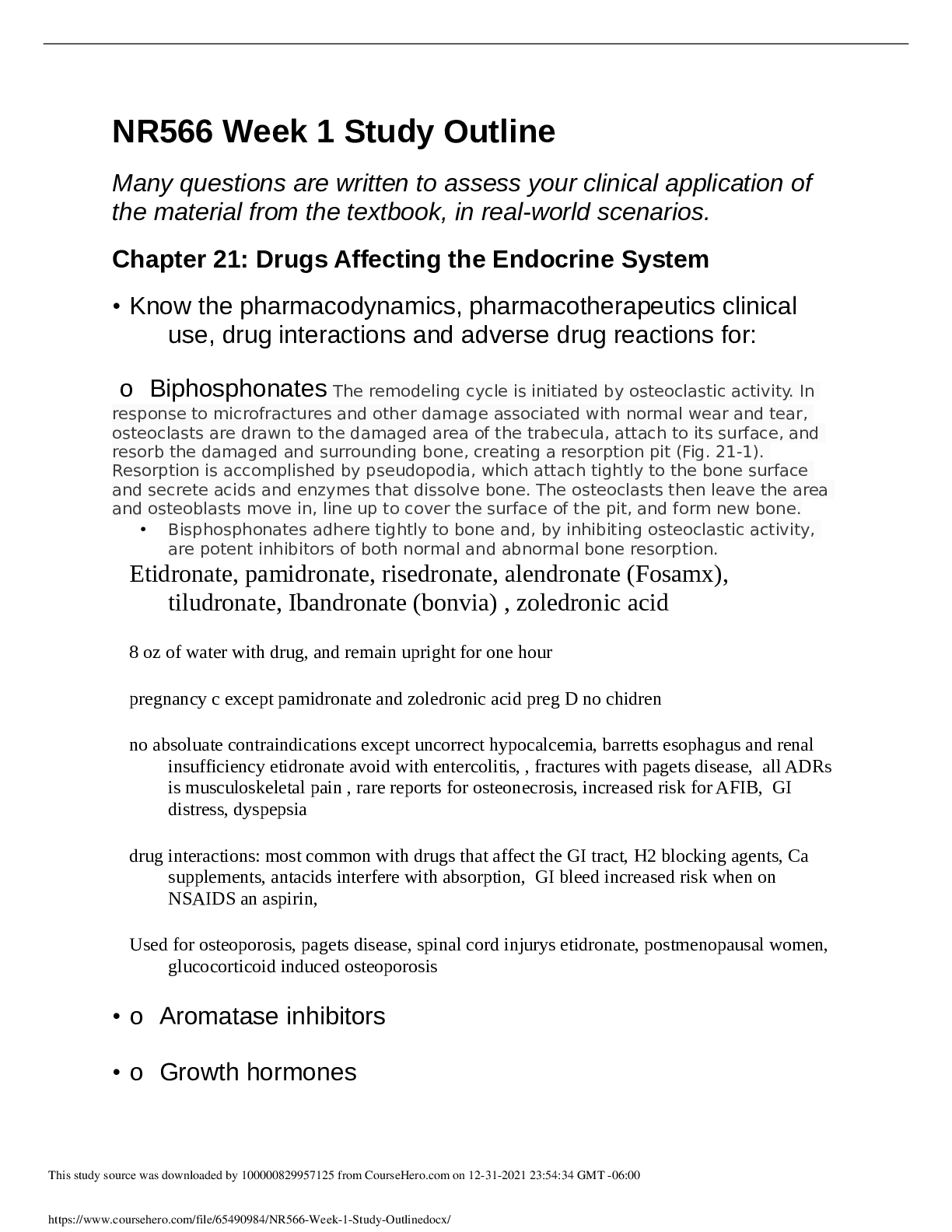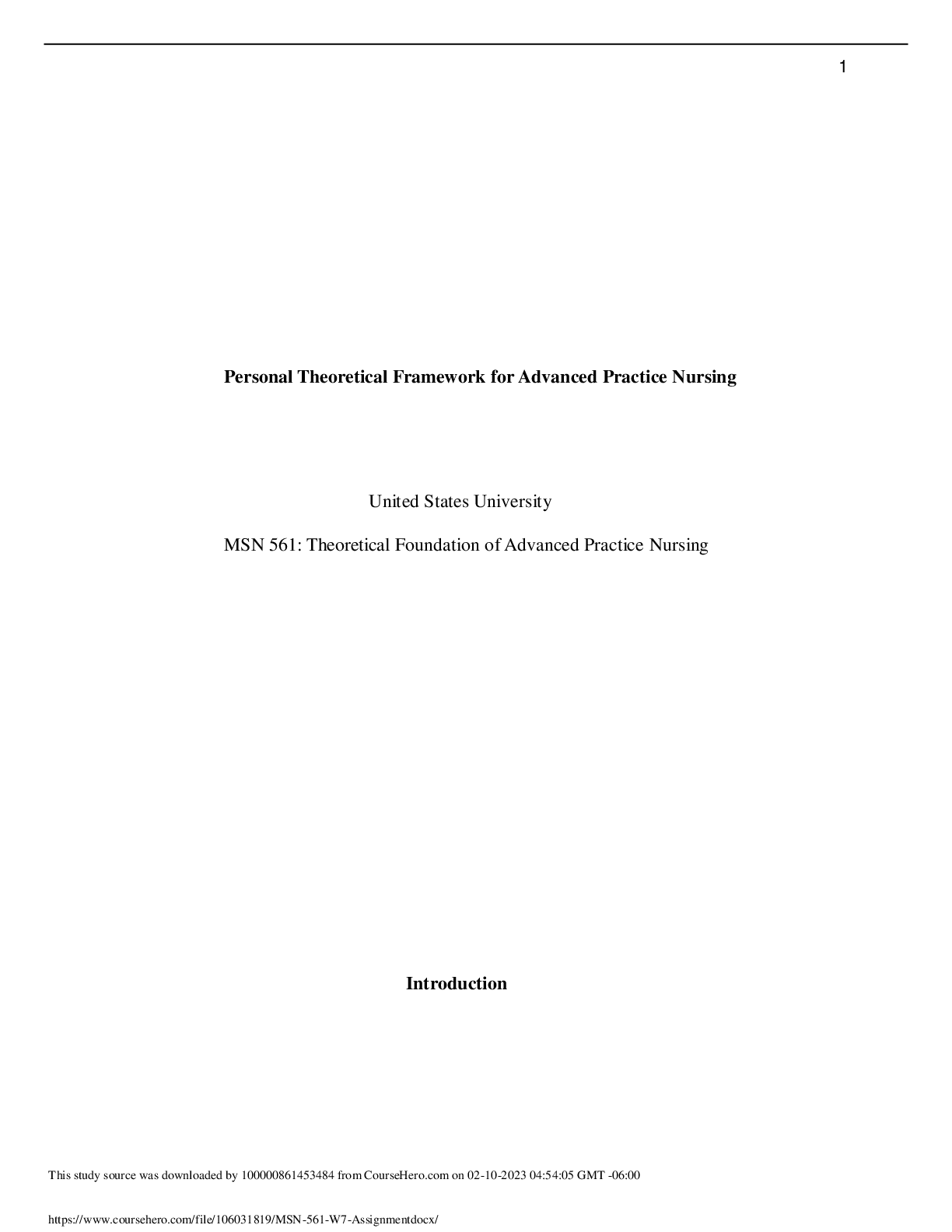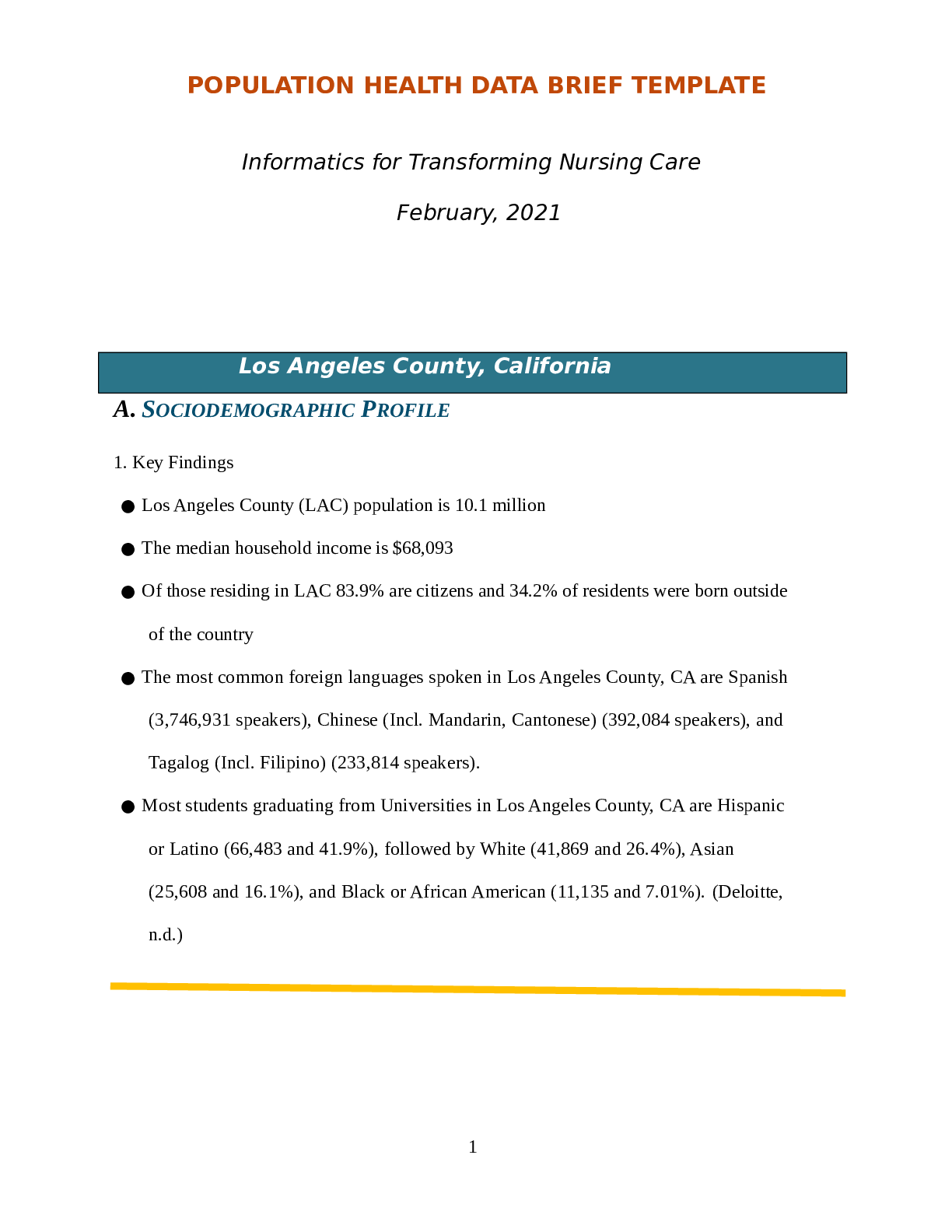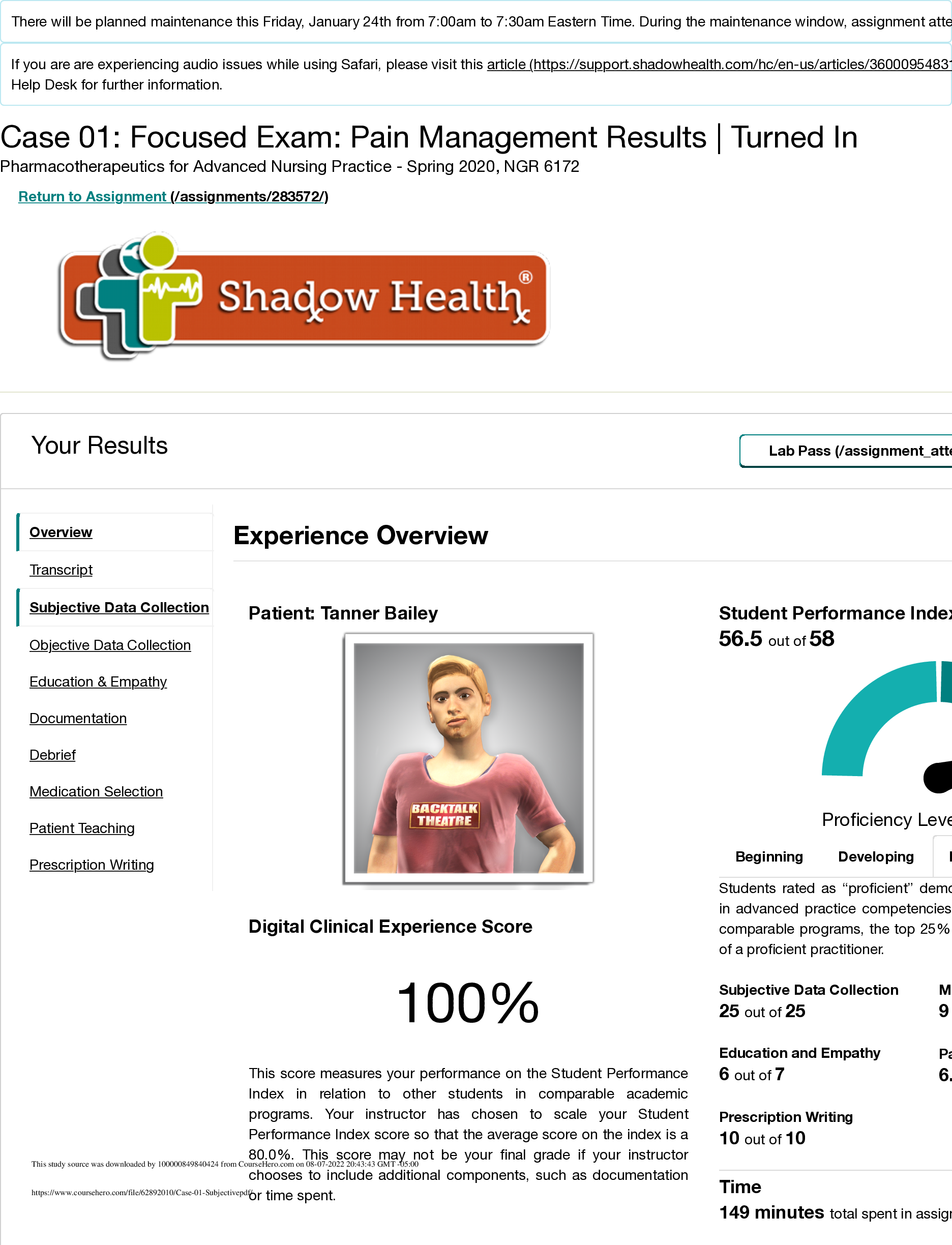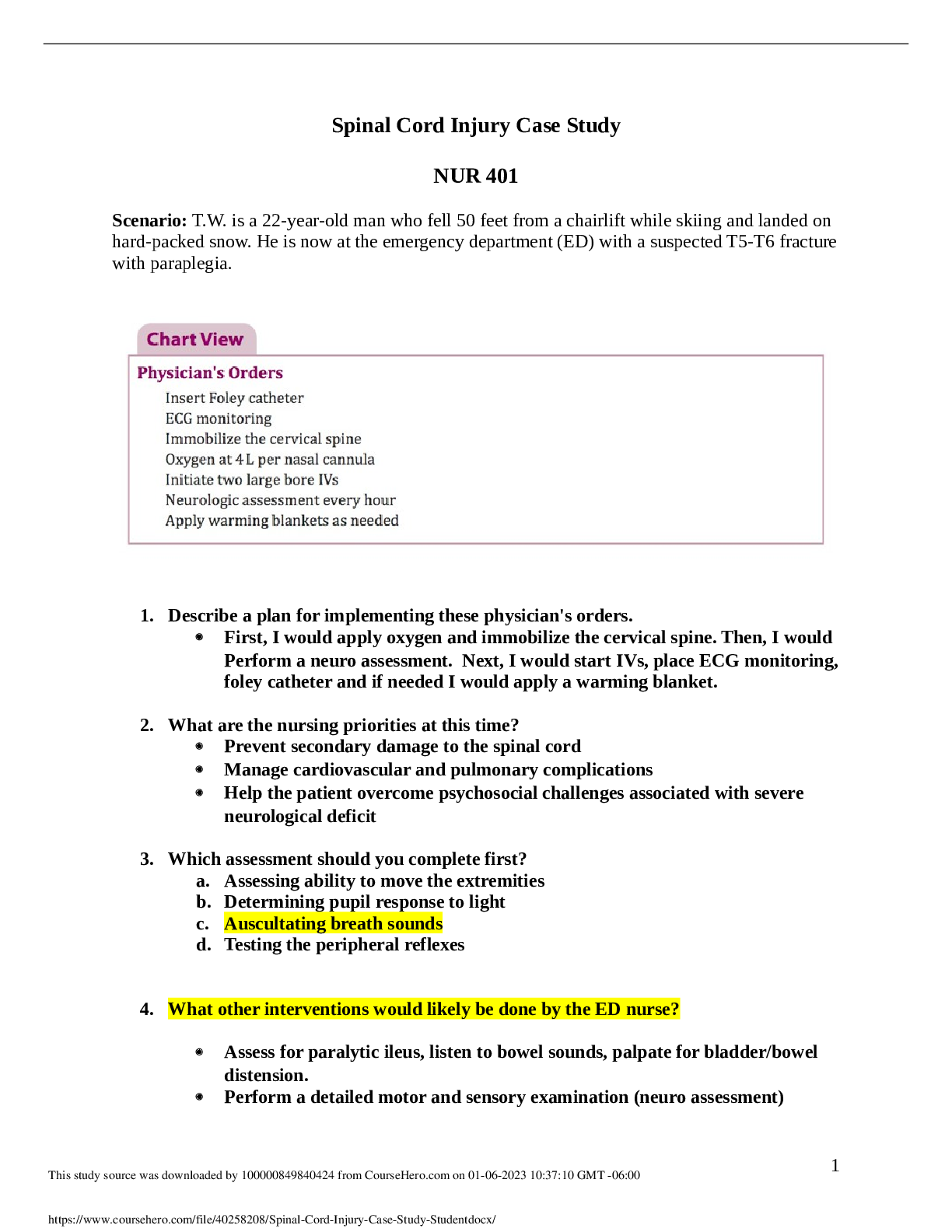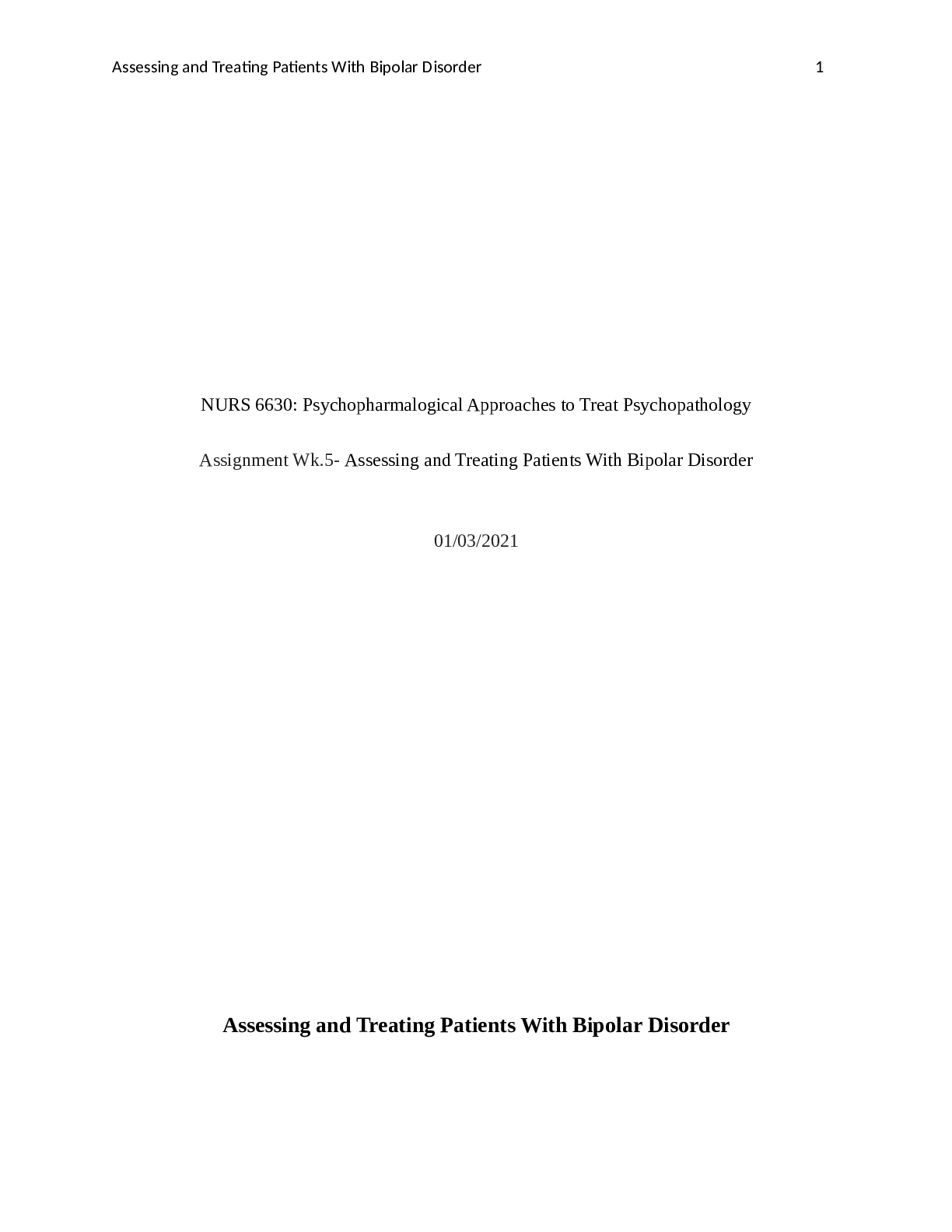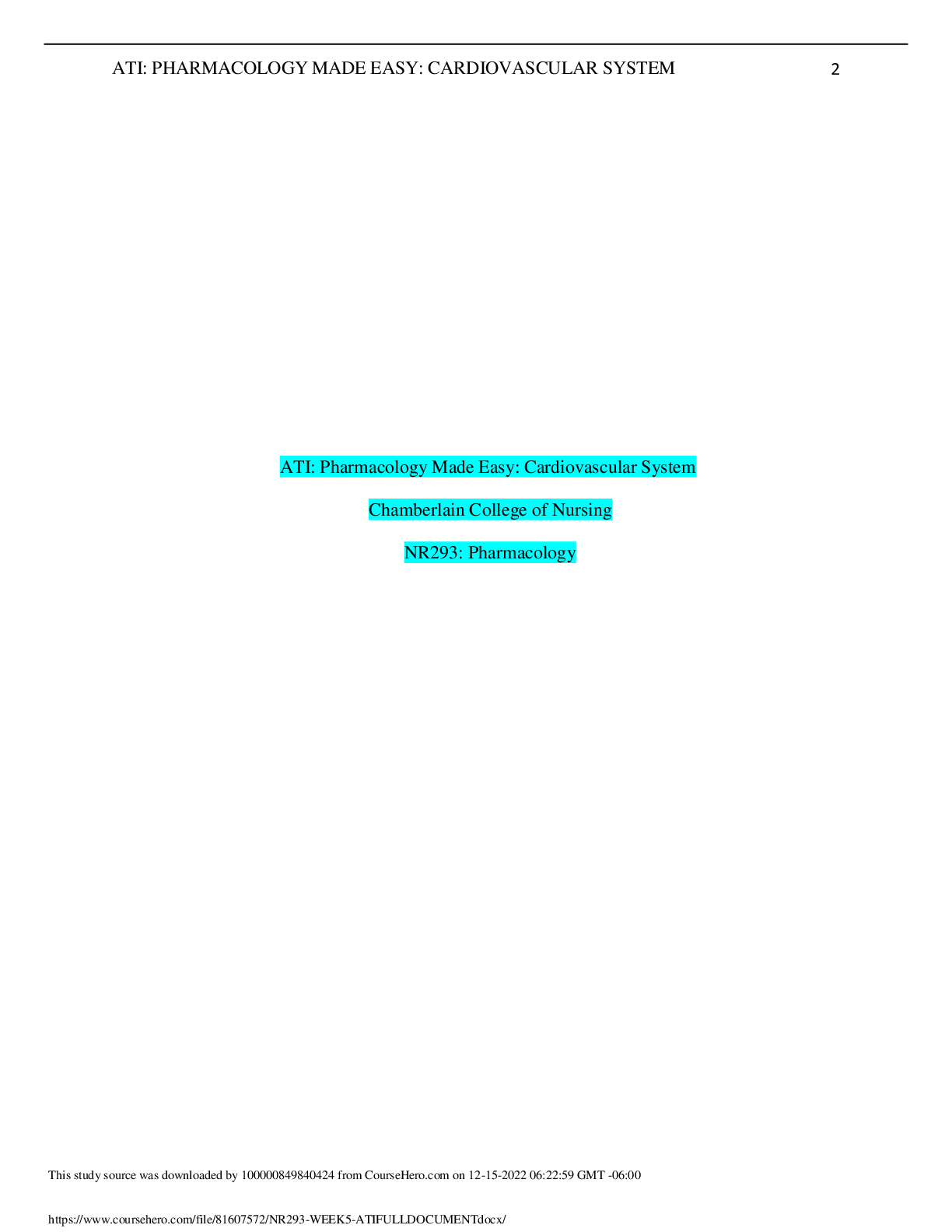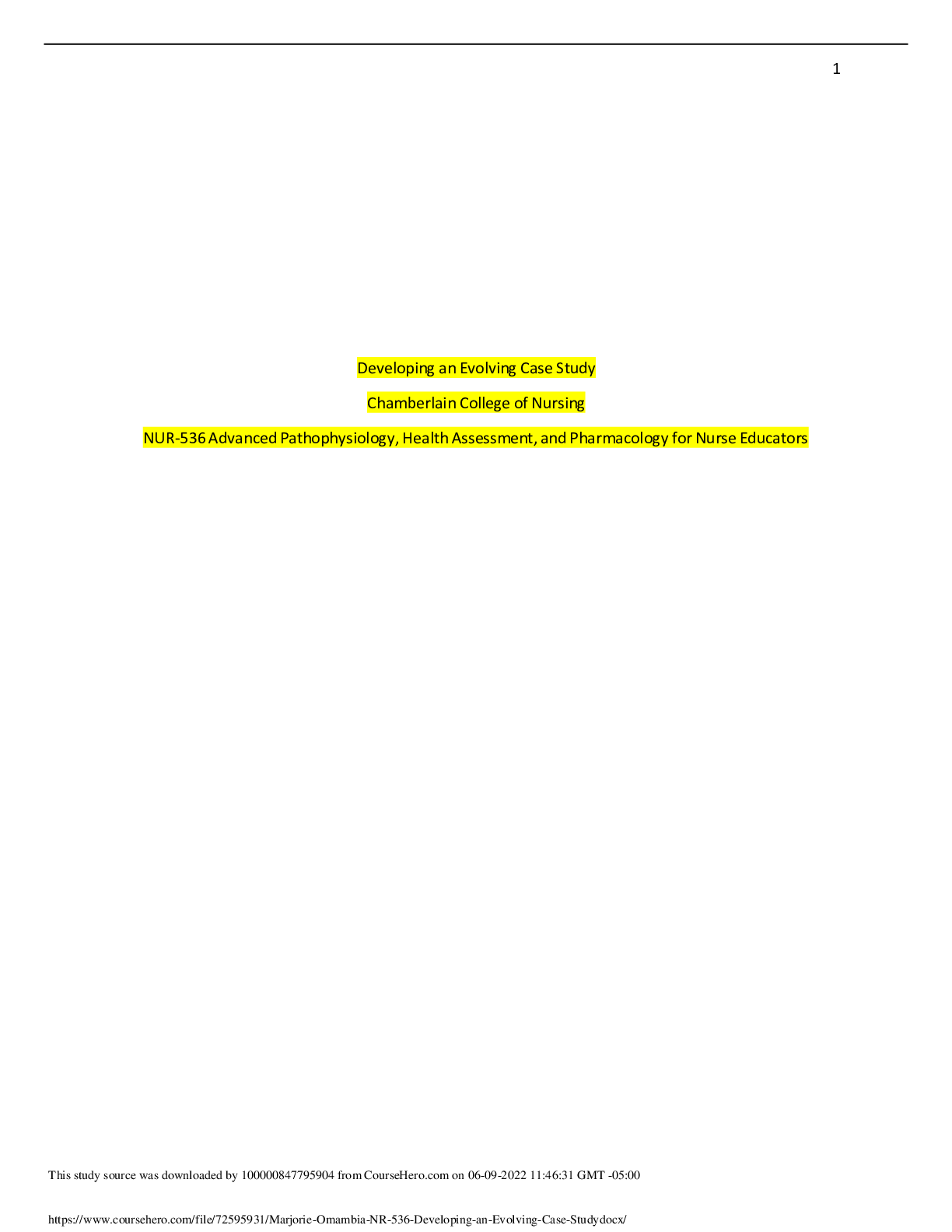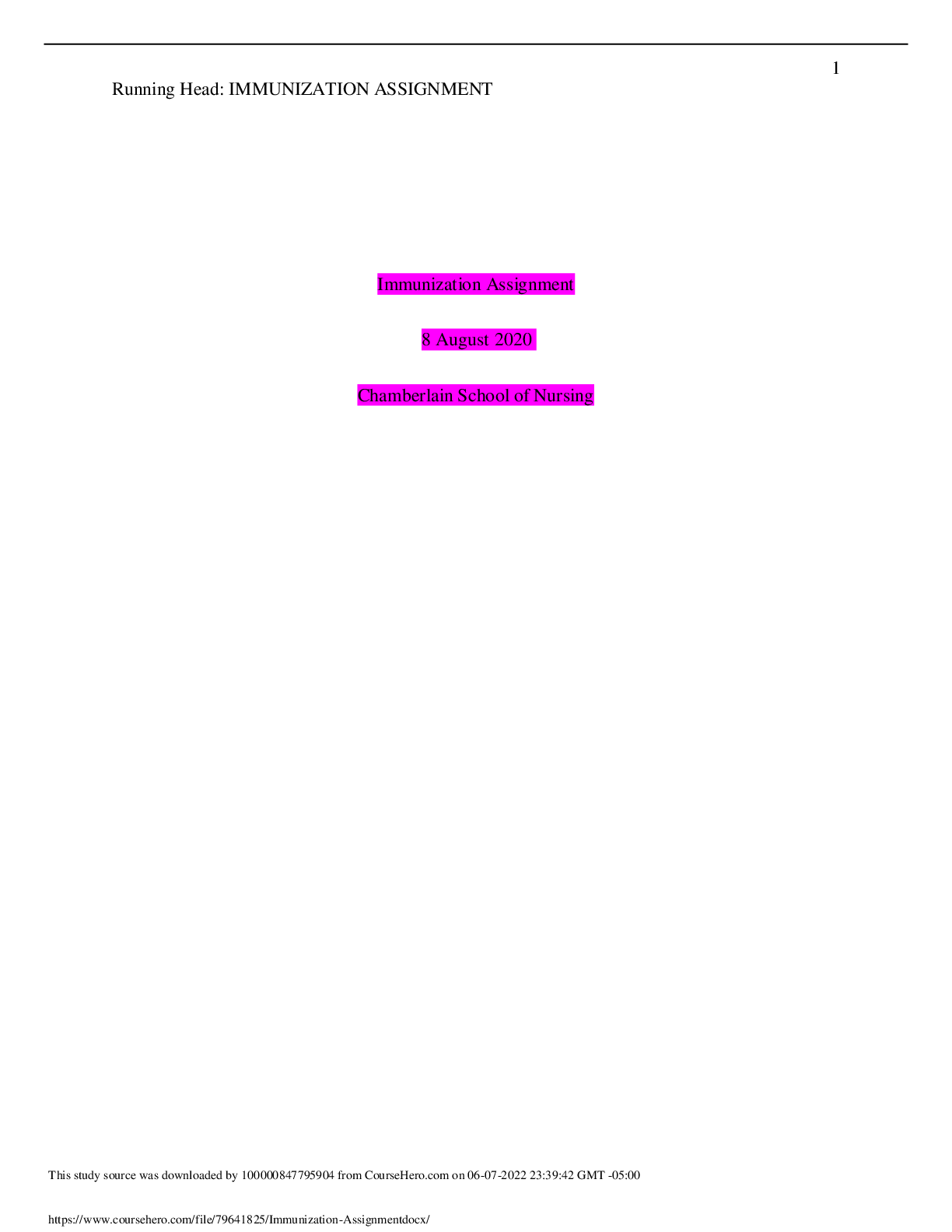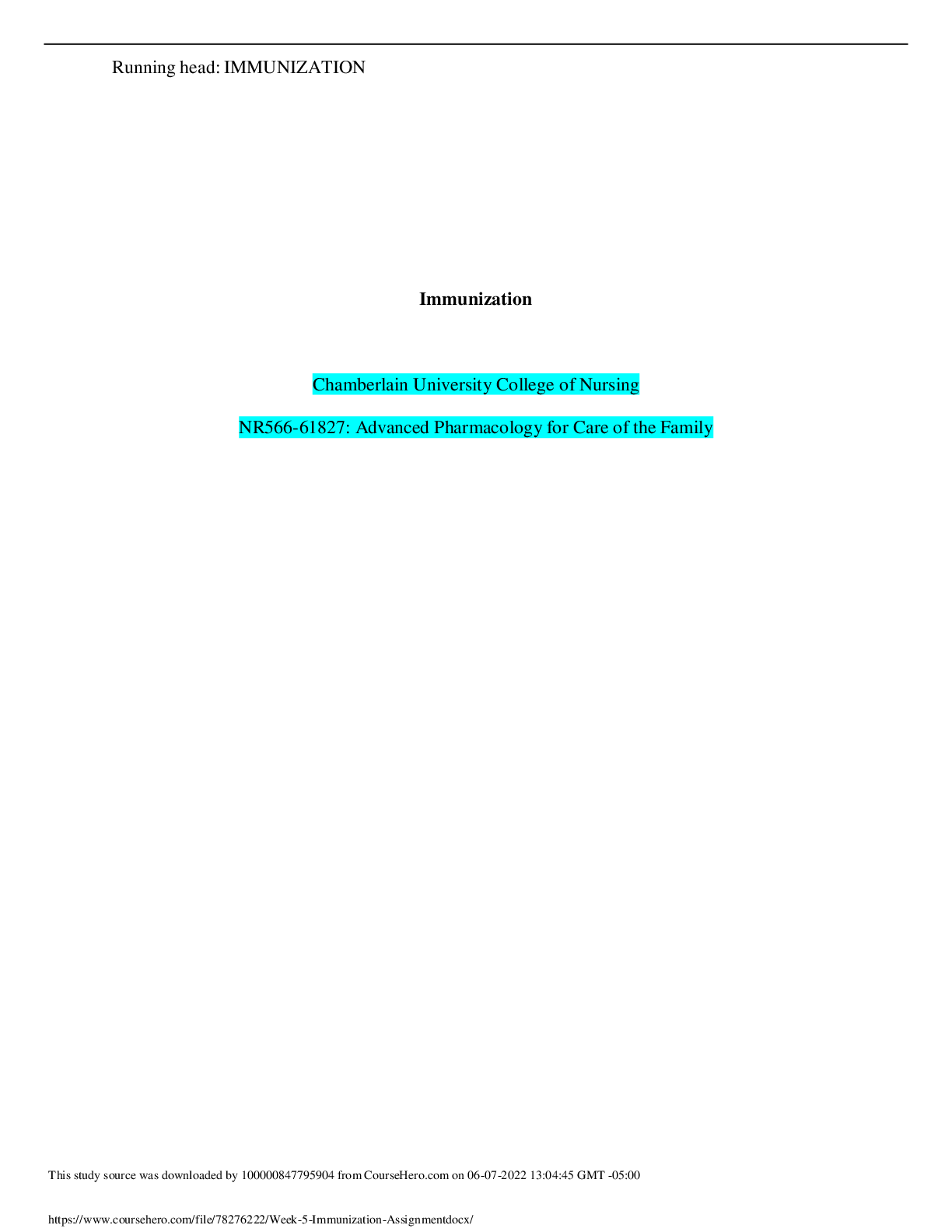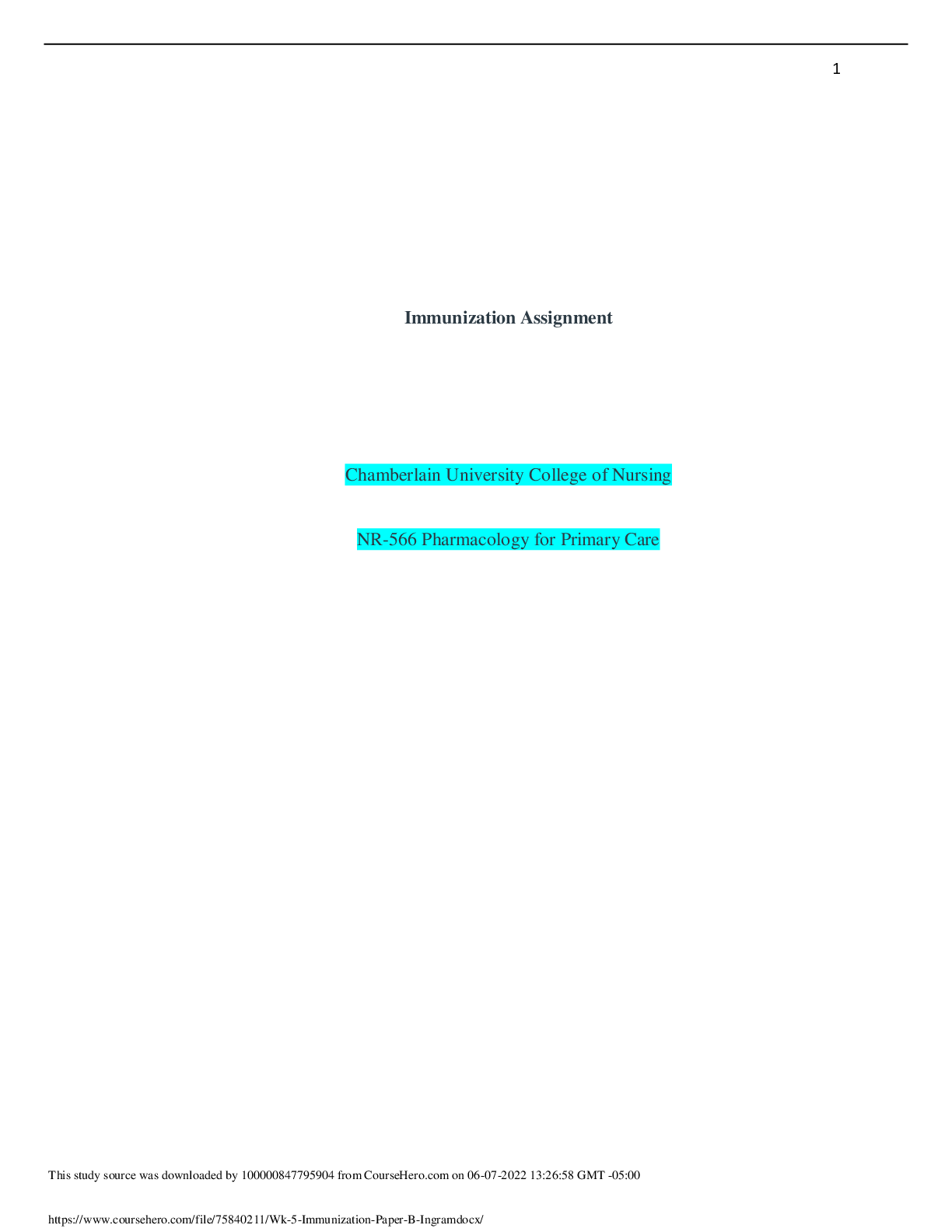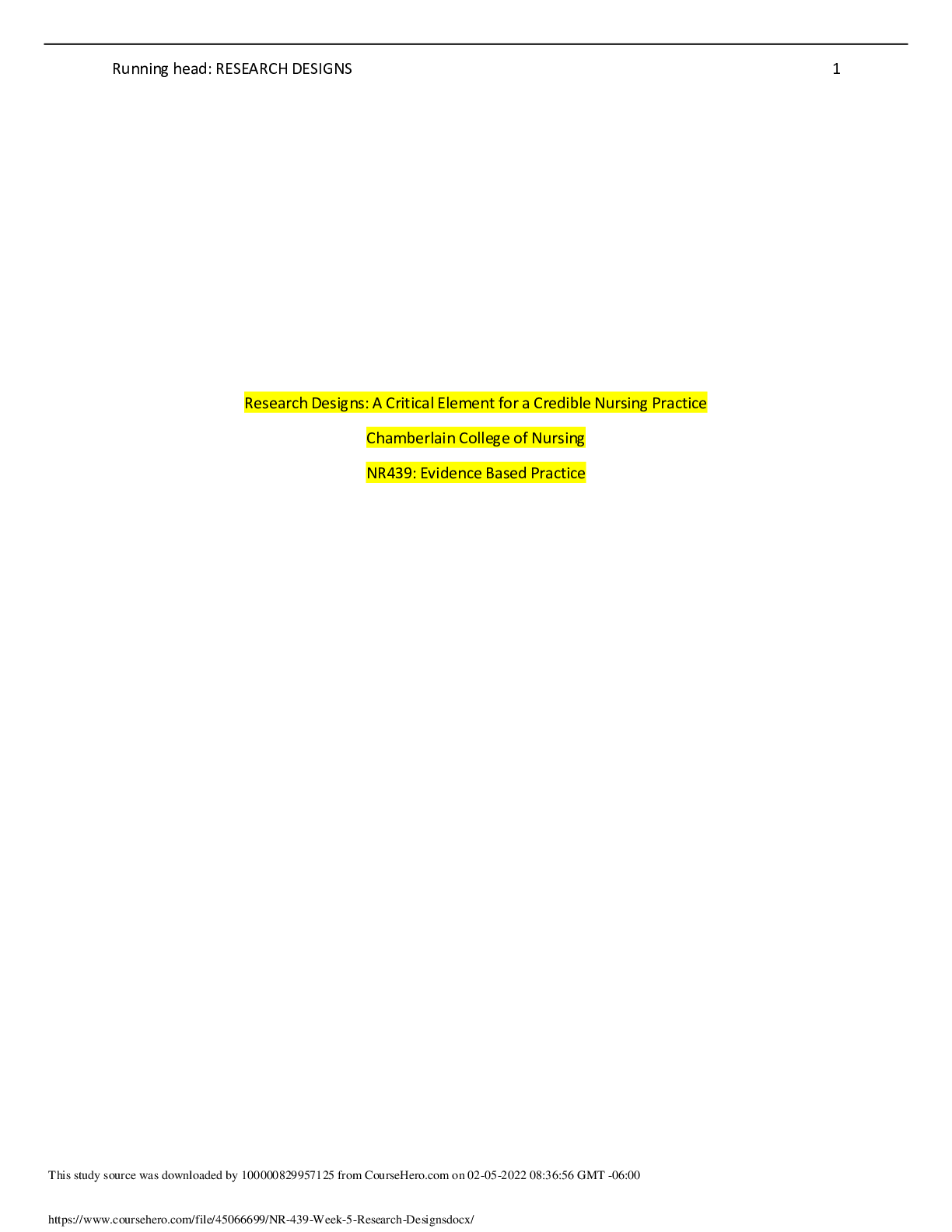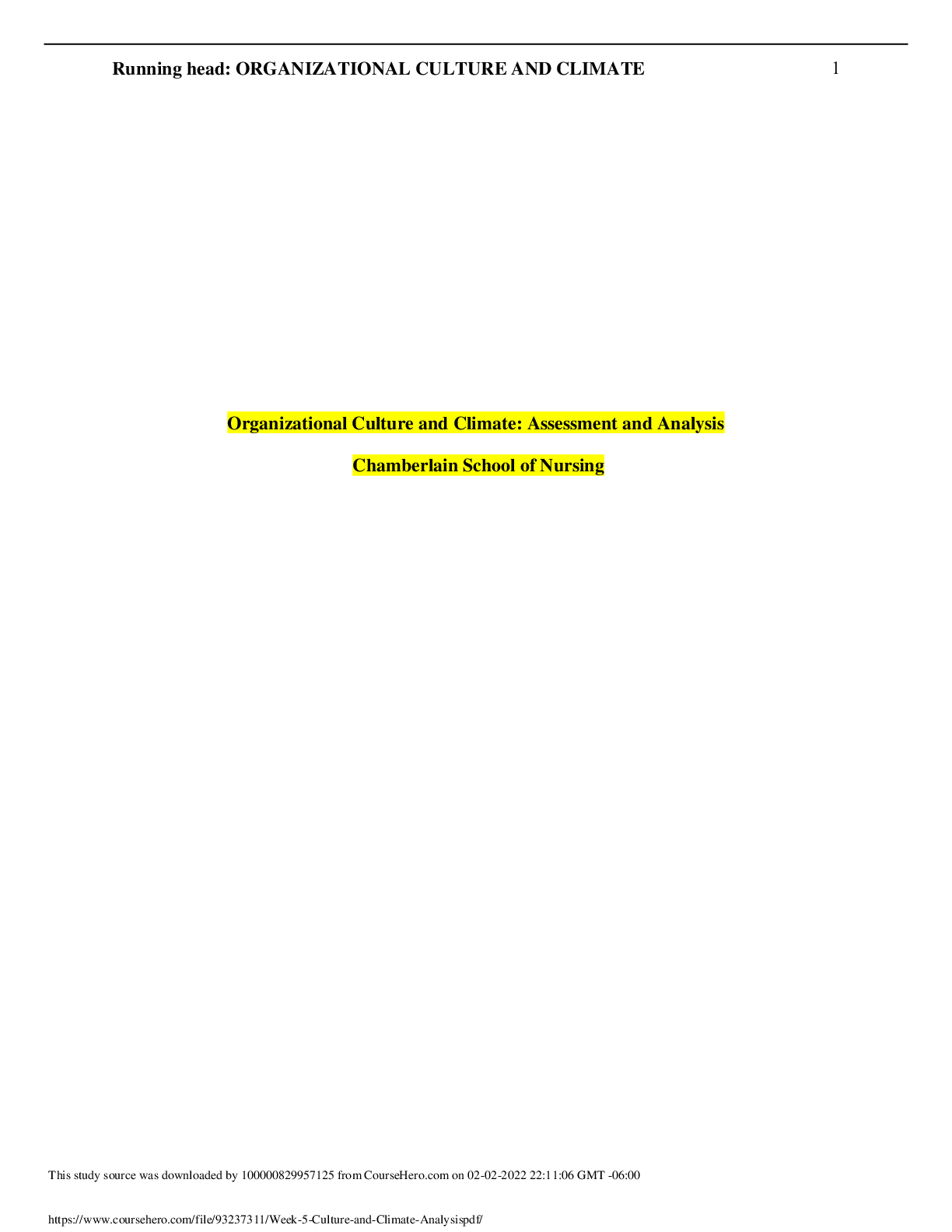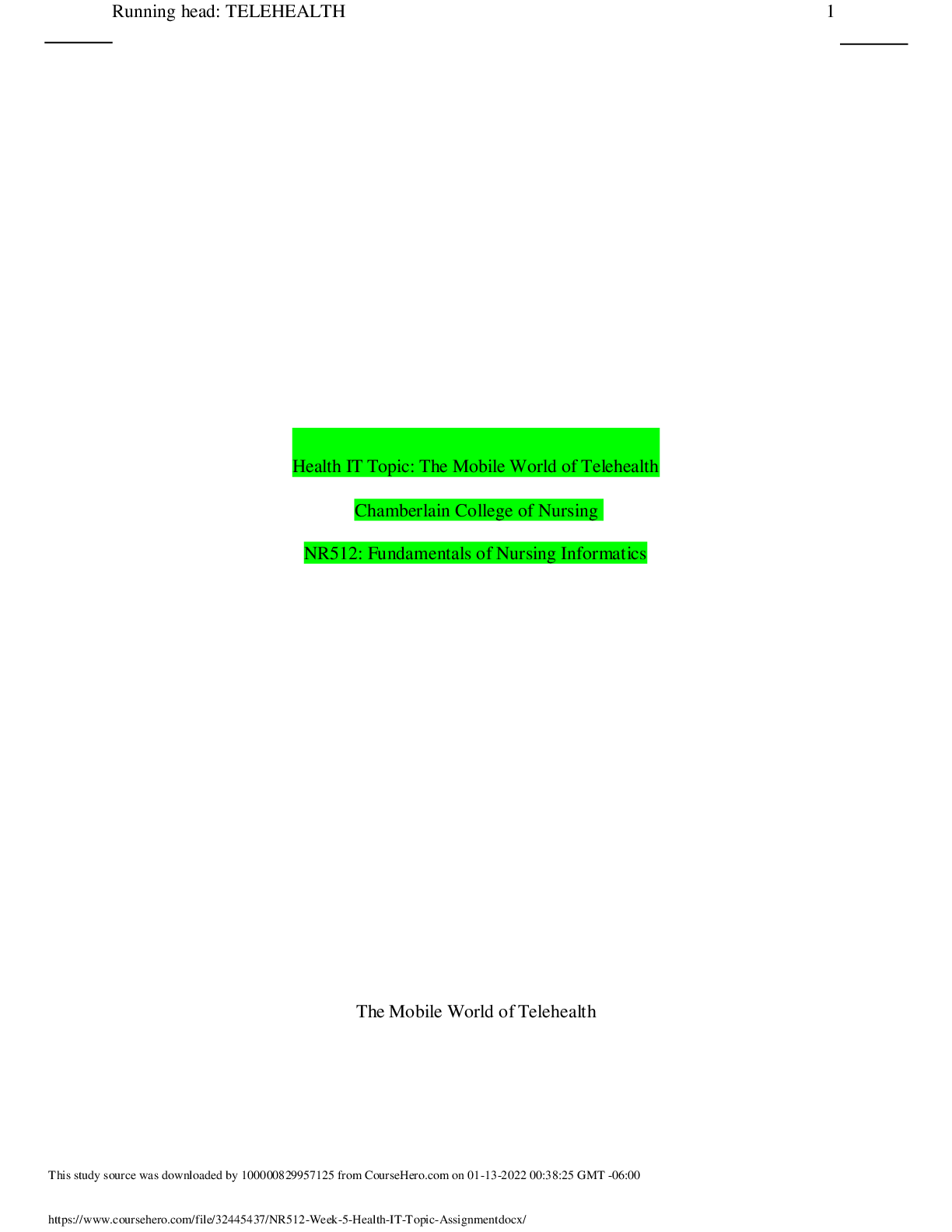Finance > CASE STUDY > HSM 340 Week 5 Assignment: Capital Budgeting Process (GRADED A) (All)
HSM 340 Week 5 Assignment: Capital Budgeting Process (GRADED A)
Document Content and Description Below
Capital Budget Process DeVry University Health Services Finance 340 Week 5 Assignment 1. Organizations that decide to issue bonds generally go through a ... series of steps. Discuss the six steps. The six steps that organizations go through to issue bonds are: 1. The healthcare borrower updates its capital plan, measures its debt capacity and attempts to “get its house in order.” 2. The healthcare borrower selects key parties involved in the bond issuance. 3. The health care borrower is evaluated by a credit rating agency. 4. The bond is rated by the credit rating agency. 5. The health care borrower enters into a loan agreement with the governmental authority, the issuer of the bonds. 6. The underwriters sell the bonds to bondholders at the public offering price, and the trustee provides the health care provider with the net proceeds. [Zel09] 2. An alternative to traditional equity and debt financing is leasing. Leasing is undertaken primarily for what purposes? Leasing is accepted more primarily than traditional equity and debt financing for four reasons, which are: 1. To avoid the bureaucratic delays of capital budget requests. 2. To avoid technological obsolescence. 3. To receive better maintenance services. 4. To allow for convenience. [Zel09] 3. Discuss the two major types of leases. The two major types of leases are Capital lease and Operating lease. 1. Capital lease also called a financial lease, is a lease in which the lessor aims to lease an asset for virtually all its economic life. A capital lease requires the lessee to bear some of the risks and benefits of owning the asset, even though it never actually owns the asset. A capital lease occurs when the lessee records the asset on the balance sheet as if it owns the asset. The lessee would then make lease payments to the lessor, and these payments consist of interest and principal repayments, just like a loan. Under a capital lease, the lessee is essentially buying the asset from the lessor, with the lease payments functioning as a financing arrangement. If the lease meets one of these four criteria, it must be accounted for as a capital lease: a) Ownership: The asset's ownership will be transferred to the lessee upon the agreement's maturation. b) Bargain Purchase Option: The lessee is given the option of purchasing the asset at a price below the market value upon the agreement's maturation. c) Leasing Term: The term of the lease agreement is greater than 75 percent of the asset's useful life. d) Present Value: The present value of all the future rent payments is equal to or greater than 90% of the assets market value. [How] 2. Operating lease is the rental of an asset from a lessor, but not under terms that would classify it as a capital lease. With an operating lease the lessee has unrestricted use of the asset, tends to have a shorter duration than a capital lease, and the lessee does not have the option to acquire the asset through a bargain purchase option. The lessee also must take into consideration they are responsible for the condition of the asset at the end of the lease, when it is returned to the lessor. The operating lease concept allows a business to keep from recording an asset on its balance sheet. This type of arrangement is known as off-balance sheet financing. [Ope16] 4. Discuss the terms short-term borrowing and long-term financing. The primary difference between short-term and long-term financing is in the length of time the debt obligations remains outstanding. Short-term financing typically refers to a wide range of financing, from debt that must be paid back almost immediately to debt that may not get paid off for up to a year. Long term financing typically refers to debt that must be paid off in a period longer than a year. The two major types of long-term financing are term loans, which must be paid off in two to seven years. The loans usually require periodic installments payments of the principal. This type of loan is frequently used to finance a tangible asset that produces income in future periods. The asset acquired with the loan proceeds may be pledged as collateral for the loan. Bonds is the second major type of long-term financing. Bonds is form where the issuer receives cash and in return issues a note called a bond. By issuing the bond, the issuer agrees to make principal and/or interest payments on specific dates to the holders of the bond. Bonds are the primary source for tax-exempt health care entities. [Cle111] 5. What are the primary sources of equity financing for not-for-profit healthcare organizations? Equity Financing can be said as one of the source for the long term finance. Every company needs the long term finance for the development of its business, whether it may be a Profit Organization or a Not-for-Profit Organization. Not-for-Profit Organizations Not-for-profit hospitals and healthcare systems still rely on tax-exempt bonds as the primary source of external capital to finance the growing need for services, updated facilities and new technology. Not-for- profit firms can raise equity capital through government grants and charitable contributions. Federal, state, and local governments are concerned about the provision of healthcare services to the general population. Most not-for-profit hospitals received their initial, start-up equity capital from religious, educational, or governmental entities, and today some hospitals continue to receive funding from these sources. However, since the 1970s, these sources have provided a much smaller proportion of hospital funding, forcing not-for-profit hospitals to rely more on profits and outside contributions. [Equ]. 6. The capital budgeting process occurs in several stages, but generally includes what? Capital budgeting is a multi-step process businesses use to determine how worthwhile a project or investment will be. The capital budgeting process consists of five steps: 1. Identify and evaluate potential opportunities - The process begins by exploring available opportunities. Once the most feasible opportunity is identified, a company should determine the right time to pursue it, keeping in mind factors such as business need and upfront costs. 2. Estimate operating and implementation costs - The next step involves estimating how much it will cost to bring the project to fruition. This process may require both internal and external research. 3. Estimate cash flow or benefit - determine how much cash flow the project in question is expected to generate. 4. Assess risk - This step involves estimating the risk associated with the project, including the amount of money the company stands to lose if the project fails or can't produce its previously anticipated results. Once a degree of risk is determined, the company can evaluate it against its estimated cash flow or benefit to see if it makes sense to pursue implementation. 5. Implement - If you choose to move forward with a project, it will need an implementation plan. The plan should include a means of paying for the project at hand, a method for tracking costs, and a process for recording cash flows or benefits the project generates. The implementation plan should also include a timeline with key project milestones, including an end date if applicable [Sta16]. 7. Discuss and list the three discounted cash flow methods. Discounted cash flow is cash flows that have been adjusted (discounted) to their present value to account for the cost of capital (over time) and the time value of money. The three discounted cash flow methods are net present value (NPV), which is a capital financing alternative useful to find other ways of capital financing. The NPV equals discounted cash inflows less discounted cash outflows. The second one is profitability index, which attempts to compare rates of return. The numerator is the net present value of the project, and the denominator is the investment cost. The third is equivalent annual cost which is the cost is the expected average cost, considering both capital and operating cost, over the life of the project [Cle111]. Bibliography Bragg, S. (2013, May 30). What are the criteria for capitol lease? Retrieved from Accounting Tools: http://www.accountingtools.com/questions-and-answers/what-are-the-criteria-for- a-capital-lease.html Cleverley, W. O., Song, P. H., & Cleverley, J. O. (2011). Essentials of Health Care Finance (Seventh ed.). Sudbury, MA: Jones & Bartlett Learning. Equity in Not-for-Profit Business. (n.d.). Retrieved from Car Free DC: http://www.carfreedc.info/2008/09/equity-in-not-for-profit-businesses How to Account for a Capital Lease. (n.d.). Retrieved from WikiHow: http://www.wikihow.com/Account-for-a-Capital-Lease Operating Lease. (2016). Retrieved from Accounting Tools: http://www.accountingtools.com/definition-operating-lease Staff, M. (2016). The 5 Steps to Capital Budgeting . Retrieved from The Motley Fool: Staff, M. (2016). The 5 Steps to Capital Budgeting -- The Motley Fool. The Motley Fool. Retrieved 6 June 2016, from http://www.fool.com/knowledge-center/the-5-steps-to- capital-budgeting.aspx Zelman, W. N., McCue, M. J., & Glick, N. D. (2009). Financial Management Of Health Care Organizations. An Introduction to Fundamentals Tools, Concepts, and Applications (Third ed.). San Francisco: Jossey-Bass. [Show More]
Last updated: 1 year ago
Preview 1 out of 7 pages
 (1).png)
Reviews( 0 )
Document information
Connected school, study & course
About the document
Uploaded On
Feb 23, 2022
Number of pages
7
Written in
Additional information
This document has been written for:
Uploaded
Feb 23, 2022
Downloads
0
Views
63




